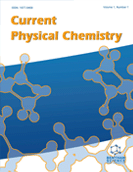
Abstract
Previous studies provide substantial evidence that catechins, polyphenol bioactive compounds, exhibit medicinal benefits. These polyphenols are found in abundance in green teas, including a combination of the four major types of catechins: (-)-Epicatechin (EC), (-)-Epicatechin-3-gallate (ECG), (-)- Epigallocatechin (EGC), and (-)- Epigallocatechin-3-gallate (EGCG). Although all four exhibit medicinal benefits, the catechin cited in the literature the most is EGCG, so derivatives of this catechin were selected for these studies. Literature searches identified catechins as biologically active compounds for a diverse set of diseases ranging from cancer, metabolism, neurological, and neuromuscular ailments. A diverse set of potential protein targets for docking with catechin derivatives was first identified as a list (n = 48). The targets were then selected based on the presence of 3D protein coordinates for these targets provided by the Rutgers Consortium for Structural Biology (RCSB) Protein Data Bank (PDB) (n = 10). The surfaces of the 3D protein targets were evaluated with computational methods to identify potential binding sites for the EGCG catechin derivatives. Static and flexible docking was done using target protein binding sites performed with the catechin derivatives followed by molecular dynamics (MD). MD protocols were run to confirm binding in the physiological range and environment. In summary, the results of computational protocols confirmed predicted binding by docking with MD of several catechin derivatives to be used as scaffolds once validated in lab-based assays. Possible changes to these scaffolding molecules that could result in tighter, more specific binding is discussed.
Graphical Abstract
[http://dx.doi.org/10.3390/molecules23061295] [PMID: 29843451]
[http://dx.doi.org/10.1074/jbc.M109.021352] [PMID: 19542563]
[http://dx.doi.org/10.3390/molecules23082020] [PMID: 30104534]
[http://dx.doi.org/10.1007/978-3-030-62226-8_15]
[http://dx.doi.org/10.1371/journal.pone.0125848] [PMID: 25938485]
[http://dx.doi.org/10.1007/978-3-030-62226-8_16]
[http://dx.doi.org/10.1007/978-3-030-62226-8_2]
[http://dx.doi.org/10.1093/nar/gkw841] [PMID: 27658967]
[http://dx.doi.org/10.1016/j.neuron.2018.08.011] [PMID: 30236283]
[http://dx.doi.org/10.1016/j.coph.2010.09.016] [PMID: 20971684]
[http://dx.doi.org/10.1038/s41589-019-0458-4] [PMID: 32042197]
[http://dx.doi.org/10.1016/j.ccell.2019.03.006] [PMID: 30991027]
[http://dx.doi.org/10.1038/s41598-019-55654-1] [PMID: 31844103]
[http://dx.doi.org/10.1038/ncomms8645] [PMID: 26134520]
[http://dx.doi.org/10.5281/zenodo.897676]
[http://dx.doi.org/10.1038/nsmb.3450] [PMID: 28805809]
[http://dx.doi.org/10.1038/srep42717] [PMID: 28256516]
[http://dx.doi.org/10.1021/acs.jmedchem.5b00104] [PMID: 25860834]
[http://dx.doi.org/10.1002/9783527621286]
[http://dx.doi.org/10.3390/molecules25061375] [PMID: 32197324]
[http://dx.doi.org/10.1021/jm901137j] [PMID: 20131845]
[http://dx.doi.org/10.1186/1758-2946-3-33] [PMID: 21982300]
[http://dx.doi.org/10.1093/nar/gky473] [PMID: 29860391]
[http://dx.doi.org/10.1002/jcc.21256] [PMID: 19399780]
[http://dx.doi.org/10.1002/jcc.21334] [PMID: 19499576]
[http://dx.doi.org/10.1021/acs.jcim.1c00203] [PMID: 34278794]
[http://dx.doi.org/10.1093/protein/8.2.127] [PMID: 7630882]
[http://dx.doi.org/10.1093/nar/gkr366]
[http://dx.doi.org/10.1016/0263-7855(96)00018-5] [PMID: 8744570]
[http://dx.doi.org/10.1002/jcc.20289] [PMID: 16222654]
[http://dx.doi.org/10.1021/acs.jctc.5b00648] [PMID: 26616351]
[http://dx.doi.org/10.1063/1.448118]
[http://dx.doi.org/10.1016/0021-9991(77)90098-5]
[http://dx.doi.org/10.1021/acsomega.6b00086]
[http://dx.doi.org/10.1021/acs.jmedchem.1c00601] [PMID: 34213345]
[http://dx.doi.org/10.7554/eLife.51636] [PMID: 31995034]
[http://dx.doi.org/10.1021/jm500487d] [PMID: 24785705]
[http://dx.doi.org/10.1089/ars.2017.7178] [PMID: 28661724]
[http://dx.doi.org/10.1111/j.1747-0285.2011.01119.x] [PMID: 21443691]
[http://dx.doi.org/10.1093/jnci/djv159] [PMID: 26063794]
[http://dx.doi.org/10.3389/fchem.2019.00602] [PMID: 31552220]
[http://dx.doi.org/10.3390/ijms21124193] [PMID: 32545494]
[http://dx.doi.org/10.1155/2018/6040149] [PMID: 29861831]
[http://dx.doi.org/10.1016/j.ejphar.2018.01.014] [PMID: 29355558]
[http://dx.doi.org/10.1021/jm050226i] [PMID: 16162002]
[http://dx.doi.org/10.1038/ng.713] [PMID: 21076408]
[http://dx.doi.org/10.1021/acs.biochem.9b00774] [PMID: 31603665]
[http://dx.doi.org/10.1039/D1CB00075F] [PMID: 34704042]
[http://dx.doi.org/10.2217/fon.09.110] [PMID: 19903073]
[http://dx.doi.org/10.1016/j.bbalip.2014.12.007] [PMID: 25532944]
[PMID: 14699880]
[http://dx.doi.org/10.1590/0001-3765201720160509] [PMID: 28538813]
[http://dx.doi.org/10.1007/978-3-030-31403-3_9]










